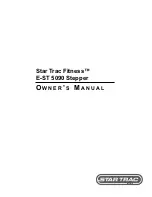
24
Troubleshooting
continued
HOPPING
FOOT WON’T
CLEAR SEAMS
THREAD NESTS
UNDER QUILT
MOTOR FAILS
TO RUN
UNEVEN QUILT
DESIGN
IRREGULAR
STITCHES
• Decrease the pressure on the hopping foot by loosening the nut at
the base of the hopping foot shaft. Adjust to the proper height.
NOTE:
When tightening the nut on the hopping foot shaft
be careful not to tighten so tight that it rotates the bar.
Remember to readjust back to normal height after quilting
the thick quilt. Take note of how many times you rotated the
foot up to accommodate the thick quilt. When finished,
rotate the foot back down the same number of times to bring
it back to the optimum setting.
• Check that the machine is threaded correctly. Make certain that
thread is snugly in place between the two tension discs. If machine
is threaded correctly, tighten top tension by rotating the tension
knob clockwise.
• Synchronize machine movement and needle speed to get roughly
8-10 stitches per inch. Elongated stitches are an indication of moving
the machine too fast for the current speed.
• Refer to threading diagram and threading instructions (
page 14
).
• Turn the machine on by using the switch on the back electrical
control cover.
• Check that the power connector is plugged into the back of the
machine and the three-prong end is plugged into power source
• Make certain that the fabric is not rolled too tight, causing the
fabric to stretch. Check that poles overlap and snap together with the
snap button so bowing won’t occur.
• If fabric is beginning to stretch or fray, contact your authorized Baby
Lock retailer for replacement leaders.
• Check that all cables are connected tightly.
Problem
Cause
Correction
Quilt sandwich is too
thick (i.e. denim with
thick batting)
Not enough tension on
top thread
Moving the machine
too fast for needle
speed selected
Improper threading
On/Off switch turned
off
Machine not receiving
power
Take-up rollers may be
bowed or bent
Leaders are stretched/
worn
Long and short stitches
in Regulated Stitch
Mode










































